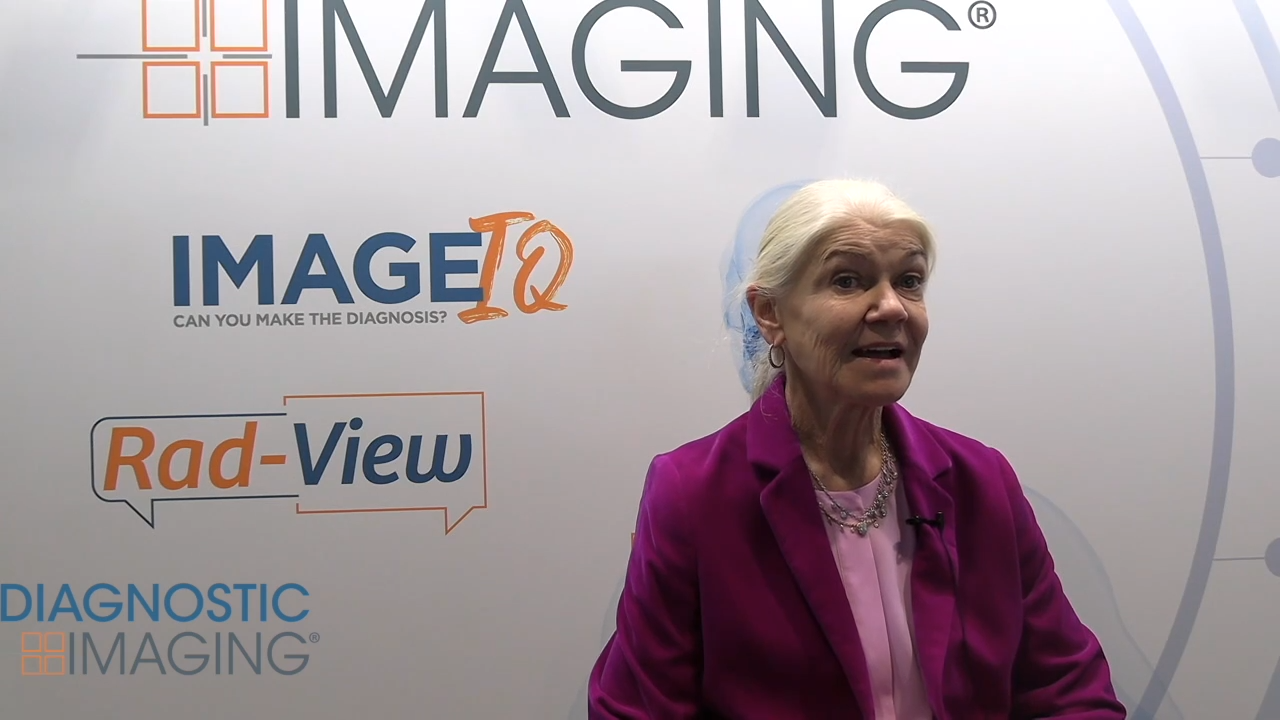GE unveils MR flagships at 1.5T and 3T
The 1.5T Discovery MR450 has joined the GE Healthcare portfolio armed with real-time cardiac imaging, multicontrast abdominal imaging in a single acquisition, and ultra high resolution musculoskeletal scanning at high patient throughput. The company also showcased its 3T Discovery MR750, shown initially last spring at the International Society for Magnetic Resonance in Medicine meeting. The FDA-cleared scanners bear GE’s new “Discovery” moniker, indicating premium performance.
The 1.5T Discovery MR450 has joined the GE Healthcare portfolio armed with real-time cardiac imaging, multicontrast abdominal imaging in a single acquisition, and ultra high resolution musculoskeletal scanning at high patient throughput. The company also showcased its 3T Discovery MR750, shown initially last spring at the International Society for Magnetic Resonance in Medicine meeting. The FDA-cleared scanners bear GE's new "Discovery" moniker, indicating premium performance.
The short-bore superconducting 1.5T magnet onboard the MR450 provides high homogeneity even when imaging with a large or off-center field-of-view. A newly designed digital receiver extends the dynamic range by four times compared with other 1.5T products from GE. Its onboard optical data architecture is isolated from external noise to boost the signal-to-noise ratio by up to 27% over conventional nonoptical receivers.
Discovery MR450 boasts workflow and productivity gains obtained through up to 60% additional anatomical coverage and resolution per unit time compared with other GE 1.5T systems, increased acquisition speed, and intuitive landmarking and scanning protocols. These time savers allow staff to focus on the patient, not the system, according to Jim Davis, vice president and general manager for GE Healthcare's global magnetic resonance imaging business.
Discovery MR750, which began commercial shipments earlier this year, is designed to make 3T scans as easy to perform as those at 1.5T with consistent results regardless of the operator's skill level. It simplifies and speeds both academic and routine studies with accelerated scan and reconstruction times, improved image uniformity, better resolution, and extended anatomical coverage, according to GE.
Liver exams can be done in 15 minutes. Routine functional MRI and complete breast exams are possible in two sequences.
Compared with other 3T scanners in the GE portfolio, the streamlined user interface on the MR750 cuts the number of steps per scan by as much as 68%. Time-saving features reduce patient setup time by up to 71%. A new thermal management system optimizes specific absorption rate and increases scan efficiency 17%, according to GE estimates. Improved gradients net a 60% increase in resolution, while an expanded field-of-view boosts anatomical coverage. Parallel imaging algorithms built into autocalibrating reconstruction for Cartesian (ARC) are coupled with high-definition coils to accelerate data acquisition. An optical radiofrequency system cuts noise and boosts signal, increasing the SNR by 27%.
Premium performance technologies introduced on GE's 3T product have migrated to the 1.5T platform. These include ARC, which not only cuts scan time but reduces scan failures due to patient motion or breath-hold failures. New clinical applications on Discovery MR450 include:
- SWAN (T2 Star Weighted ANgiography) for delineating small vessels and microbleeds, assessing iron and calcium deposits, and imaging vasculature in 3D of the whole brain at high resolution in four minutes;
- Inhance for vascular imaging without contrast media, particularly of the renal arteries in patients who may be susceptible to gadolinium-linked nephrogenic systemic fibrosis;
- Inhance 3D Velocity, a phase contrast-based sequence optimized to acquire 3D MRA images in the brain and abdomen; and
- Inhance 2D Inflow, optimized to visualize straight-path blood vessels, such as femoral and tibial arteries.
Can MRI-Based AI Bolster Biopsy Decision-Making in PI-RADS 3 Cases?
December 9th 2024In patients with PI-RADS 3 lesion assessments, the combination of AI and prostate-specific antigen density (PSAD) level achieved a 78 percent sensitivity and 93 percent negative predictive value for clinically significant prostate cancer (csPCa), according to research presented at the Radiological Society of North American (RSNA) conference.
The Reading Room: Artificial Intelligence: What RSNA 2020 Offered, and What 2021 Could Bring
December 5th 2020Nina Kottler, M.D., chief medical officer of AI at Radiology Partners, discusses, during RSNA 2020, what new developments the annual meeting provided about these technologies, sessions to access, and what to expect in the coming year.
RSNA 2020: Addressing Healthcare Disparities and Access to Care
December 4th 2020Rich Heller, M.D., with Radiology Partners, and Lucy Spalluto, M.D., with Vanderbilt University School of Medicine, discuss the highlights of their RSNA 2020 session on health disparities, focusing on the underlying factors and challenges radiologists face to providing greater access to care.
New Interventional Radiology Research Shows Merits of Genicular Artery Embolization for Knee OA
December 3rd 2024In a cohort of over 160 patients with knee osteoarthritis (OA), including grade 4 in nearly half of the cases, genicular artery embolization led to an 87 percent improvement in the quality of life index, according to research presented at the recent RSNA conference.
Siemens Healthineers Debuts New Photon-Counting CT Systems at RSNA
December 2nd 2024Debuting at the Radiological Society of North American (RSNA) conference, the new photon-counting computed tomography (PPCT) scanners Naeotom Alpha.Pro and Naeotom Alpha.Prime reportedly combine rapid scan times with high-resolution precision.










